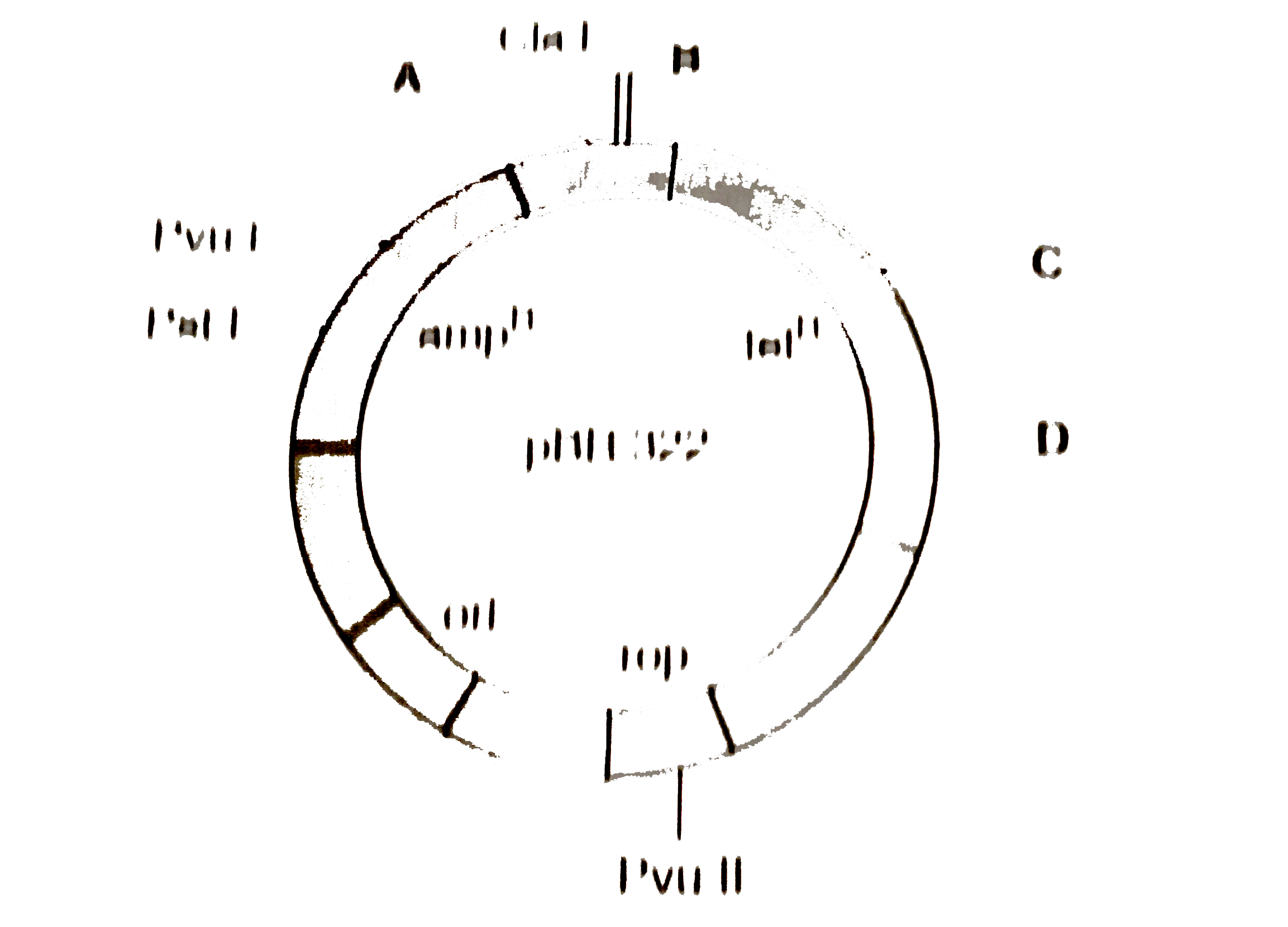In pBR 322, how many recognition sites are present ?
8
7
3
4
The correct Answer is:A
To determine the number of recognition sites present in the plasmid pBR322, we can follow these steps:
1. Identify pBR322:
- pBR322 is a plasmid that is widely used as a cloning vector in E. coli. It was one of the first plasmids developed for this purpose.
2. Understand Recognition Sites:
- Recognition sites are specific sequences of DNA where restriction enzymes can cut. These sites are crucial for cloning as they allow the insertion of foreign DNA into the plasmid.
3. Count the Recognition Sites:
- pBR322 contains a total of 8 recognition sites for different restriction enzymes.
4. List the Recognition Sites:
- The specific recognition sites in pBR322 are:
1. Pvu II
2. Pst I
3. Pvu I
4. Eco RI
5. Cla I
6. Hind II
7. Bam HI
8. Sal I
5. Conclusion:
- Therefore, the answer to the question is that pBR322 has 8 recognition sites.
Final Answer:
pBR322 has 8 recognition sites.
---
- pBR322 is a plasmid that is widely used as a cloning vector in E. coli. It was one of the first plasmids developed for this purpose.
- Recognition sites are specific sequences of DNA where restriction enzymes can cut. These sites are crucial for cloning as they allow the insertion of foreign DNA into the plasmid.
- pBR322 contains a total of 8 recognition sites for different restriction enzymes.
- The specific recognition sites in pBR322 are:
1. Pvu II
2. Pst I
3. Pvu I
4. Eco RI
5. Cla I
6. Hind II
7. Bam HI
8. Sal I
- Therefore, the answer to the question is that pBR322 has 8 recognition sites.
pBR322 has 8 recognition sites.
Topper's Solved these Questions
- BOOK - A2ZCHAPTER - BIOTECHNOLOGY: PRINCIPLES AND PROCESSESEXERCISE - Section A: Topicwise Questions (topic 3: Processes Of Recombinant Dna Technology) Isolation Of The G5videos
BIOTECHNOLOGY: PRINCIPLES AND PROCESSES
- BOOK - A2ZCHAPTER - BIOTECHNOLOGY: PRINCIPLES AND PROCESSESEXERCISE - Section A1videos
BIOTECHNOLOGY: PRINCIPLES AND PROCESSES
- BOOK - A2ZCHAPTER - BIOTECHNOLOGY: PRINCIPLES AND PROCESSESEXERCISE - Section D: Chapter-end Test50videos
BIOTECHNOLOGY: PRINCIPLES AND PROCESSES
- BOOK - A2ZCHAPTER - BIOTECHNOLOGY AND ITS APPLICATION EXERCISE - Section C : PREVIOUS YEARS' EXAMINATIOIN QUESTIONS (Assertion and Reason Type Questions)4videos
BIOTECHNOLOGY AND ITS APPLICATION
- BOOK - A2ZCHAPTER - ECOSYSTEMEXERCISE - Section-d Chapter-end Test50videos
ECOSYSTEM
Similar Questions
Assertion : E.coli having pBR322 with DNA insert at BamHI site cannot grow in medium containing tetracyline.
Reason : Recoginition site for BamHI is present in terR region of pBR22.View SolutionIn pBR 322 ampRandtetR gene are present. When we ligate a foreign DNA at Pst-I site, then recombinant plasmids will lose the resistance to the
View Solution
Knowledge Check
- Question 1 - Select One
In pBR 322, recognition segqences, that are present on the same type of selectable marker
APst I, Pvu IBBam HI, Sal ICBoth A and BDNone of the above - Question 2 - Select One
Recognition sites are usually
A4-8 bp longB19-20 kbpC10-15 bp longD1-2 bp long - Question 3 - Select One
Assertion: E. coli having pBR322 with DNA insert at BamHI site cannot grow in medium containing tetracycline.
Reason: Recognition site for Bam HI is present in tetR region of pBR322.ABoth assertion and reason are true, and the reason is the correct explanation of the assertion.BBoth assertion and reason are true, but the reason is not the correct explanation of the assertion.CAssertion is true but reason is false.DBoth assertion and reason are false
E. coli cloning vector pBR322 contains restriction sites in the region of ampR, tetR genes that codes for the
View SolutionWhich is recognition site of tRNA?
View SolutionHow many receptor sites are present in Na+−K+ pump for binding Na+ ions?
View SolutionE. coli cloning vector pBR322 showing restriction sites ori and antibiotic resistance genes is given below. Select the correct option .
 View Solution
View SolutionThe site for cell recognition is
View Solution

